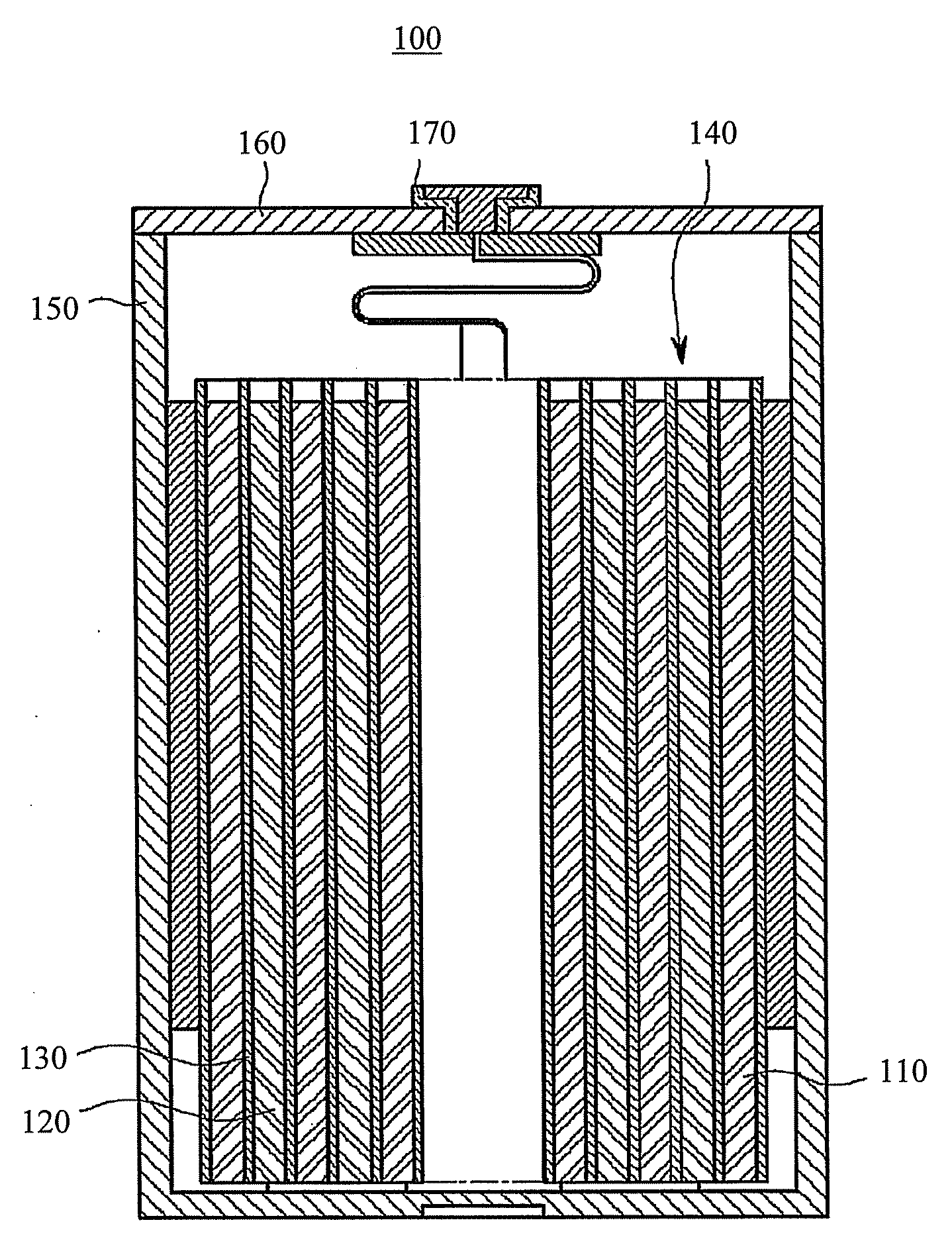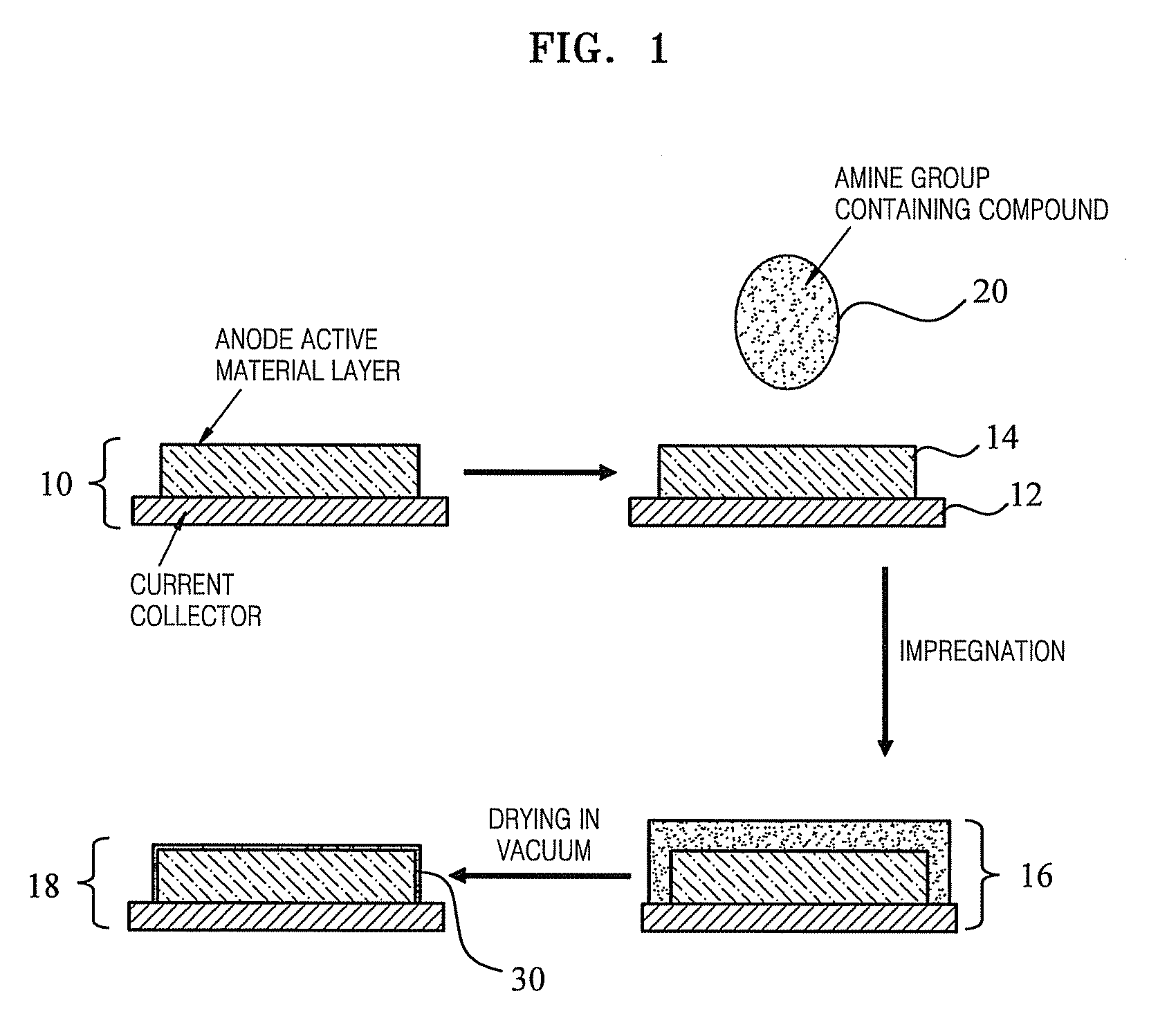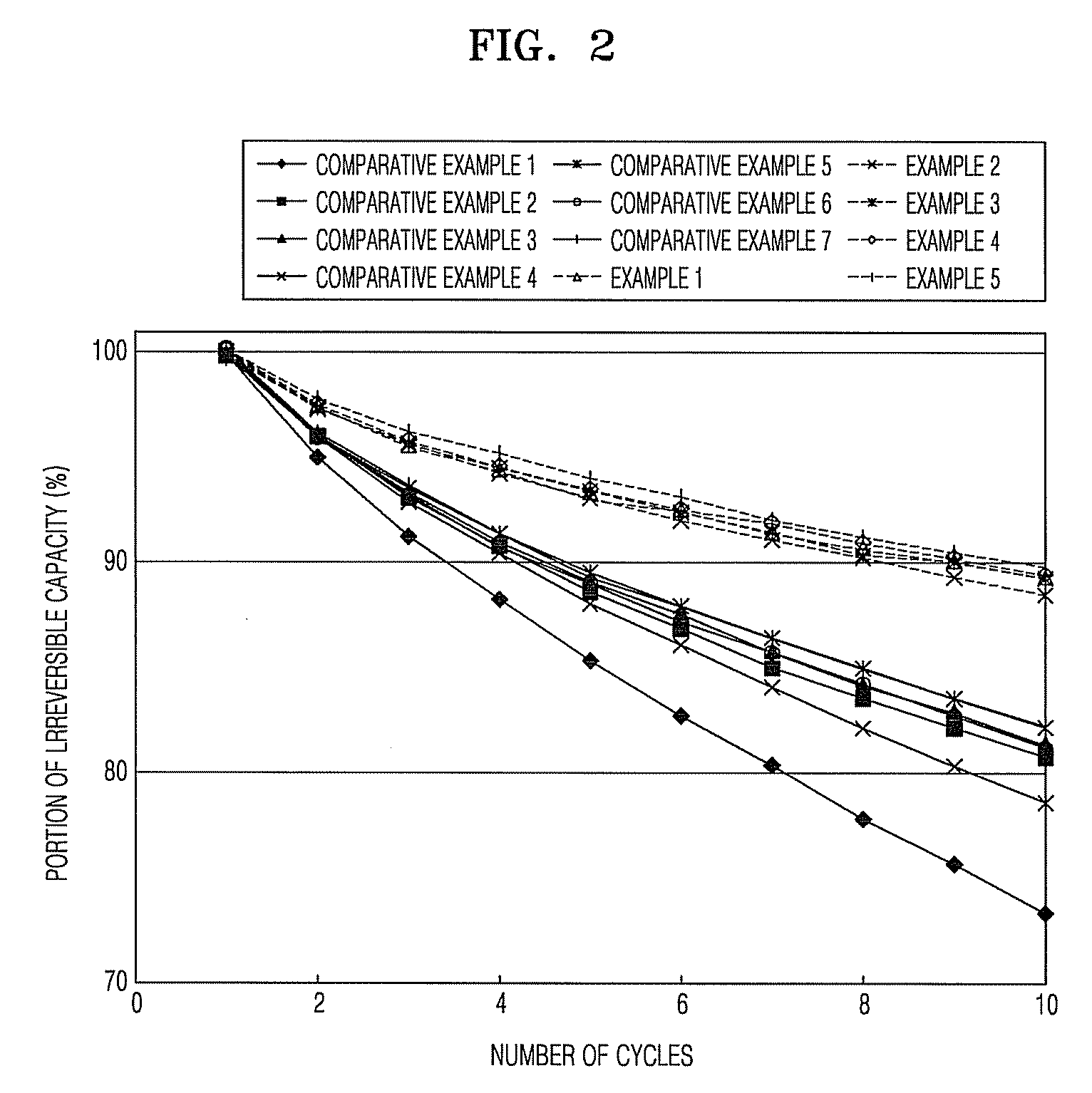Surface treated anode and lithium battery using the same
- Summary
- Abstract
- Description
- Claims
- Application Information
AI Technical Summary
Benefits of technology
Problems solved by technology
Method used
Image
Examples
example 1
[0050]7.5 g of the composite anode active material powder, 1.5 g of graphite powder, and 20 g of 5 wt % of a PVDF solution (solvent: NMP) were mixed using a mechanical stirrer, to prepare a mixture (slurry). The slurry was coated on a copper (Cu) current collector using a doctor blade to a thickness of about 200 μm. The coated slurry was dried on the Cu current collector, at room temperature, and then dried again under a vacuum, at 130° C., thereby preparing an anode plate.
[0051]Aminopropyltriethoxy silane was added to dimethyl carbonate (DMC), and then stirred for 2 hours, to prepare a 0.5 wt % solution. 0.25 mL of the solution was applied to a 1 cm2 surface area of the anode. A vacuum was applied, such that the solution was drawn into the anode, at room temperature, and the dimethyl carbonate solvent was removed. Thereafter, drying was performed in a vacuum oven at 120° C., for 2 hours, thereby finally preparing a surface treated anode.
example 2
[0052]A surface treated anode was prepared following the same procedure as in Example 1, except that instead of aminopropyltriethoxy silane, aminopropyltrimethoxy silane was used, to form the surface treated anode.
example 3
[0053]A surface treated anode was prepared following the same procedure as in Example 1, except that a 1 wt % aminopropyltriethoxy silane solution was produced, to form the surface treated anode.
PUM
 Login to View More
Login to View More Abstract
Description
Claims
Application Information
 Login to View More
Login to View More - R&D
- Intellectual Property
- Life Sciences
- Materials
- Tech Scout
- Unparalleled Data Quality
- Higher Quality Content
- 60% Fewer Hallucinations
Browse by: Latest US Patents, China's latest patents, Technical Efficacy Thesaurus, Application Domain, Technology Topic, Popular Technical Reports.
© 2025 PatSnap. All rights reserved.Legal|Privacy policy|Modern Slavery Act Transparency Statement|Sitemap|About US| Contact US: help@patsnap.com



